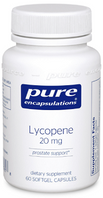Vitamin A
The methodology is by HPLC. Some of the functions of vitamin A are in the body's vision, mucous membranes, cell division, skin maintenance, sperm production, egg development, growth, bone development and cancer prevention. Symptoms indicate a deficiency of vitamin A in the body include poor vision, night blindness, "bumps" on skin, lower disease resistance, stunted growth, pregnancy problems, acne, and xerosis.
Preformed vitamin A is found mainly in animal meats. Beta carotene is composed of two vitamin A molecules and is found in green or orange vegetables, and fruits. These include carrots, squash, spinach, apricots, etc. The RDA for vitamin A is 3000 I.U. per day. A supplemental dose could range from 5000 to 10,000 I.U. A toxic dose may occur at 25,000 to 50,000 I.U. The body will convert beta carotene to vitamin A if the thyroid is functioning properly and the patient does not have diabetes. These two conditions may lead to a high serum beta carotene and low serum vitamin A. The normal range in our method (HPLC) is 24 to 90 â¡g/dL.
Vitamin A is measured in serum which must be protected from light.
Vitamin E
Vitamin E is a fat-soluble vitamin. There are eight forms of vitamin E, however, the most biologically active form is d-alpha-tocopherol. The best defined role for vitamin E is an antioxidant for unsaturated fatty acids in cell membranes. It is also important in energy metabolism and synthesis of RNA, DNA, and red blood cells. It acts as an antioxidant in the lungs against smog. Vitamin E is absorbed in the presence of bile in the small intestine. Deficiency of vitamin E may result in hemolysis of RBCs, sterility, higher risk for heart disease and stroke.
The RDA is 22 I.U. A suggested supplemental range is 100 to 1000 I.U. A toxic range has not been established, but 4000 I.U. and higher should be taken with caution. The methodology is by HPLC. The normal range established in our laboratory is 0.6 to 2.7 mg/dL.
Specimen required is 0.5 mL of serum protected from light and shipped in an amber plastic tube.
Beta-Carotene
Beta-carotene is a lipid soluble vitamin, or carotenoid. It is also known as pro-vitamin A. It is a very large molecule that is converted to vitamin A in a ratio of 1:2 beta carotene to vitamin A when it metabolized. The body will convert beta carotene to vitamin A based on its needs. This conversion needs a proper functioning thyroid and the patient cannot be a diabetic. It is not unusual to find an elevated beta carotene and low vitamin A in these patients. Beta carotene is a very strong antioxidant especially in lipid membranes. It is also important in proper eye health. There is no toxic level for beta carotene. If taken in an excessive amount, the skin, especially on the hands, may turn yellow. The method is by HPLC as described for the lipid vitamin profile described above. The accepted normal value established in our laboratory is: 5 to 65 ug/dL.
Specimen is serum, protected from light.
Lutein
Lutein is a carotenoid found in dark green leafy vegetables such as spinach, and in corn and other various vegetables. Egg yokes are also a source of lutein. Lutein is a strong antioxidant that helps filter high-energy, blue wavelengths from the visible-light spectrum. Lutein concentrates in the macula portion of the retina, helping to prevent age-related macular degeneration. It also is in the lens and helps prevent cataracts. It helps to protect the skin from free-radicals produced from UV rays. Most Americans do not get enough lutein in their diet. Research has shown that 6 to 20 mg of lutein a day are needed to obtain health benefits. It also stimulates the immune system. The method is by HPLC as described for the lipid vitamin profile described above. The accepted normal value established in our laboratory is: 7 to 28 ug/dL.
Specimen is 1.0 mL of serum, light protected.
Lycopene
Lycopene is a fat-soluble carotenoid. It is one of the strongest antioxidants found in the tissues and has been shown to reduce the risks of various cancers, especially prostate cancer. Foods that have the highest levels of lycopene are red tomatoes (NOT the yellow ones), catsup, tomato paste and tomato juice. The incidence of prostate cancer in Italian men (where tomato products are consumed in large amounts), is about 60% less than in the U.S. High levels of lycopene also protect against breast cancer and ovarian cancer. High lycopene concentrations in the serum is also associated with a lower risk of cardiovascular disease in middle aged and elderly women. Methodology is by HPLC as for the other lipid-soluble vitamins. The accepted normal range established in our laboratory is: 13 to 54 ug/dL.
Doctors who wish to order kits, please call our lab directly to set up an account before ordering. 316-684-7784
- CPT CODE:
- 84590; 84446; 82380; 82491 (x2)
- COLLECTION CONTAINER:
- SST or red-stopper tube
- STATE & SHIPPING RESTRICTIONS:
- We cannot ship lab kits to NY, AK, HI, or international
- MINIMUM VOLUME:
- 1 mL
- NORMAL VALUES:
The accepted normal range established in our laboratory are:
Vitamin A: 24 to 90 â¡g/dL.
Vitamin E: 0.6 to 2.7 mg/dL.
Beta-Carotene : 5 to 65 ug/dL.
Lutein: 7 to 28 ug/dL.
Lycopene: 13 to 54 ug/dL.- PATIENT PREP:
- None
- PROCESS METHOD:
- The methodology is by HPLC
- PROCESS TIME:
- 5 to 7 business days
- REJECTION CAUSES:
- Gross Hemolysis
- SPECIMEN VOLUME:
- 3 mL serum; light protected
- TRANSPORT CONTAINER:
- Amber plastic transport tube
- TRANSPORT INSTRUCTIONS:
- Refrigerate or freeze








